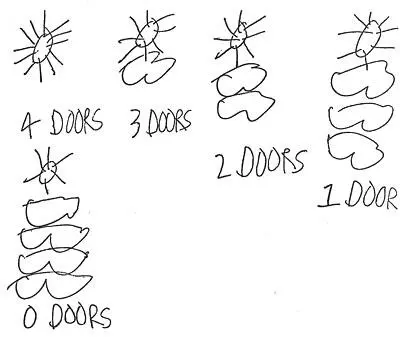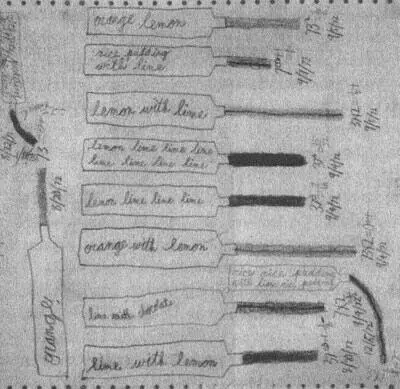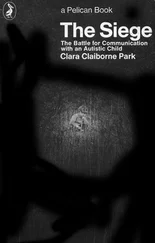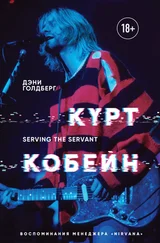Clara Park - Exiting Nirvana
Здесь есть возможность читать онлайн «Clara Park - Exiting Nirvana» весь текст электронной книги совершенно бесплатно (целиком полную версию без сокращений). В некоторых случаях можно слушать аудио, скачать через торрент в формате fb2 и присутствует краткое содержание. ISBN: , Жанр: Психология, на английском языке. Описание произведения, (предисловие) а так же отзывы посетителей доступны на портале библиотеки ЛибКат.
- Название:Exiting Nirvana
- Автор:
- Жанр:
- Год:неизвестен
- ISBN:0-316-69117-8
- Рейтинг книги:4 / 5. Голосов: 1
-
Избранное:Добавить в избранное
- Отзывы:
-
Ваша оценка:
- 80
- 1
- 2
- 3
- 4
- 5
Exiting Nirvana: краткое содержание, описание и аннотация
Предлагаем к чтению аннотацию, описание, краткое содержание или предисловие (зависит от того, что написал сам автор книги «Exiting Nirvana»). Если вы не нашли необходимую информацию о книге — напишите в комментариях, мы постараемся отыскать её.
All illustrations are by Jessy Park.
Exiting Nirvana — читать онлайн бесплатно полную книгу (весь текст) целиком
Ниже представлен текст книги, разбитый по страницам. Система сохранения места последней прочитанной страницы, позволяет с удобством читать онлайн бесплатно книгу «Exiting Nirvana», без необходимости каждый раз заново искать на чём Вы остановились. Поставьте закладку, и сможете в любой момент перейти на страницу, на которой закончили чтение.
Интервал:
Закладка:
… When [Jessy] sets the table for dinner, she puts a tall glass by her plate. It is green, her preferred color, and it is divided into 8 equal levels by decorative ridges. Into this she pours her juice. It too is green. On most days she will fill the glass exactly to the sixth or seventh level. Sometimes it will be filled to the top; occasionally it will be lower. Ordinarily, the exact level is determined by the type of day with respect to weather and the phase of the moon. «All different kind of days», depending on sun and moon and weather, are the heart of her system.
The system contains 29 kinds of days… The two most important factors that govern the category of day are the position of the sun in the sky and the presence or absence of clouds…. [A day with zero clouds is what Jessy calls dayhigh (in summer when the sun is high) or day- nothing (in fall, winter, and spring). These] are the best of all, celebrated by a full glass of juice. The level of juice is twice the number of doors, down to the disastrous day- bump, when [Jessy] has been a bad girl.
[Jessy’s] mood depends on the sky. During dayhigh, and even more during daynothing, she is cheerful, joking, and cooperative. Clouds, especially if they come to spoil daynothing, bring despondency., and clouds covering a full moon are the worst of all.
Most day things [Jessy’s word] have numbers, in which the digits 1, 3, and 7 predominate. Most of the numbers are primes: 7 is good, 3 is bad, but almost always 3 is associated with 7. The numbers 73 and 137 are. magic, and the concept of days in general belongs to their product 73 X 137 = 10001. [21] David Park and Philip Youderian, „Light and Number: Ordering Principles in the World of an Autistic Child“, Journal of Autism and Childhood Schizophrenia, vol. 4, no. 4 (1974), pp. 315–318.

Jessy's clouds-and-door system, spring 1970.
And so on, for ten pages, two tables of correlated phenomena, and a page and a half of intricate calculations. The splendors of the system defy summary; even the investigators didn’t understand them all. Those who share a fascination with numbers can explore them further in what they wrote.
But whether or not we could follow the numbers, we all had to live with the system. It was a rich and inclusive we. No one person, or family, could provide all that Jessy needed to grow. There was always someone else working with her in those days. Most of these Jessy-friends lived with us, some for a summer, some for a year or more, Jessy’s therapists, teachers, and good companions. They were college students, most of them, though two of the best were still in high school. None had any training in special education or developmental psychology, but I claim for them the word «therapist» without hesitation. They worked with Jessy, played with her, sang with her, joked with her, comforted her, understood her secret words, interpreted her to strangers, devotedly taught her whatever they could. Endlessly inventive, endlessly generous, without them hers would be a different and sadder story.
Some, like the young mathematician, recorded their observations. Most did not. But one, it seemed, kept a journal, and after more than twenty-five years, knowing I was again writing about Jessy, she sent it to me. Its entries remind me of what I had gladly forgotten; they bring back how very hard it was, for Jessy and for the inclusive us, in the days when the system ruled. Fran came to us when Phil had moved on. It is her turn to speak. [22] The quotations are from Frances Groves Dodd, unpublished journal, entries of October 20 and November 27, 1972.
Pure blue sky. While walking the long hill, a little cloud appeared and covered the sun briefly — oh, what sadness and anger — mumble mumble, looking down at the ground, dragging the feet, stopping, answering no more questions about school. «What is the matter, Jessy?» «The cloud over the sun». I told her, after the cloud was no longer over the sun and was now just in the sky, that she only needed to be a tiny bit sad, because the cloud was small and the blue sky was big.
No help, mumble mumble. Finally the cloud went behind the mountain and trees. «Jessy, the cloud has gone away». Jessy was happy again immediately.
The cloud, it turned out, was «full of numbers», multiples and powers of 37 and 73, with two bad 3’s. Jessy drew it in a picture, with herself and Fran, when the cloud was gone and it was all over. But the weather was not always so obliging. «Some days are almost all bad», Fran wrote a month later. «Full Moon. Low, heavy clouds. What a horrendous day». Jessy came home crying; someone had taken her special seat on the school bus. (There was a system there too, but we never understood it.) She refused to sing with Fran («I will cry again») or answer her questions. She mumbled because the radiator hissed. She cried when she made a mistake in sewing, stopped, cried some more. When Fran tried to comfort her she went in her room and told Fran to go away.
I walked out the door and cried all the way home. It was just too much of a struggle all afternoon… I cried and cried, as bad as Jessy, I suppose. No work Tuesday. Hooray! A holiday for a full week- must rest and be renewed to begin again.
There were good days too, with swimming lessons, walks, bicycle rides in benign weather. With Fran’s encouragement and supervision, Jessy designed and sewed a gorgeous quilt, the sun on one side, the full moon on the other, not a cloud in either sky. And the system kept on growing, spreading invisibly, underground. As it predated its discovery by others («Found these at ears and years», she told her father), it evolved without their attention. What Fran had glimpsed would prove to be its next and most florid stage.
Moon, sun, and clouds were now correlated with, of all things, flavors. And gum wrappers — twenty-nine of them. Fran didn’t know it, and I didn’t notice it, but of course that was the number of day things, real and imaginary. There were also (only now do I discover it) twenty-nine of the numbers in the pictured cloud. So it was not good when three wrappers were missing. «No remedy. Mumble mumble and threats of tears». But this time Jessy found a way to cope. She drew the number-filled cloud again and cut it into tiny bits to sift between her fingers. «She played with them all afternoon. A Decent Day».
Jessy told Fran there was a new kind of cloud, «rice rice pudding with lime rice pudding».
Jessy had made tubes of many flavors with numbers on them, which were the same as the [numbers on the] cloud. She started to make a chart of suns with the same flavors (lime lime lime, little bit lime, rice pudding, etc.). She wanted me to go away, but I had her tell me about school first, and then she continued to make the flavored suns, neatly in rows.
Then she cut them out. Those suns are in the suitcase, twenty- nine of them, their rays recalling the emotional valences of days past. Jessy drew them short and stubby, so as to allow room to do full justice to the colors of the coordinated flavors. Rice pudding, for example (not good — correlated with 3), had to be drawn in grain by grain, a painstaking operation, since Jessy classified the grains as «fairly big», «big», and «extra large». The flavor tubes are in the suitcase too, in a twenty-nine-, then a forty-one-tube version. Jessy taped six sheets of paper together so she could draw them all. From each tube emerges a length of icing. «This is a happy frosting come out the tube», she explained. «And sometimes sad».

Flavor tubes (detail), another of Jessy system
Читать дальшеИнтервал:
Закладка:
Похожие книги на «Exiting Nirvana»
Представляем Вашему вниманию похожие книги на «Exiting Nirvana» списком для выбора. Мы отобрали схожую по названию и смыслу литературу в надежде предоставить читателям больше вариантов отыскать новые, интересные, ещё непрочитанные произведения.
Обсуждение, отзывы о книге «Exiting Nirvana» и просто собственные мнения читателей. Оставьте ваши комментарии, напишите, что Вы думаете о произведении, его смысле или главных героях. Укажите что конкретно понравилось, а что нет, и почему Вы так считаете.



![Майкл Азеррад - Come as you are - история Nirvana, рассказанная Куртом Кобейном и записанная Майклом Азеррадом [litres]](/books/392533/majkl-azerrad-come-as-you-are-istoriya-nirvana-ra-thumb.webp)



![Эверетт Тру - Nirvana - Правдивая история [litres]](/books/399241/everett-tru-nirvana-pravdivaya-istoriya-litres-thumb.webp)




